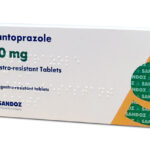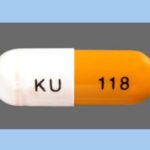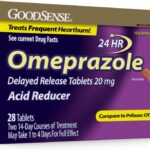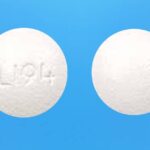G232 G Pill: Uses, Dosage, Side Effects, Interactions

The orange / purple, capsule-shaped pill with the imprint G232 G has been identified as Omeprazole Delayed-Release 40 mg supplied by Glenmark Generics Inc., USA. G232 G pill is used to treat certain conditions where there is too much acid in the stomach. It is used to treat gastric and duodenal ulcers, erosive esophagitis, and gastroesophageal reflux disease (GERD).
GERD is a condition where the acid in the stomach washes back up into the esophagus. Sometimes, omeprazole is used in combination with antibiotics (eg, amoxicillin, clarithromycin) to treat ulcers associated with the infection caused by the H. pylori bacteria.
Omeprazole is also used to treat Zollinger-Ellison syndrome, a condition where the stomach produces too much acid. Omeprazole is also used to treat dyspepsia, a condition that causes sour stomach, belching, heart burn, or indigestion. In addition, omeprazole is used to prevent upper gastrointestinal tract bleeding in seriously ill patients. Omeprazole is a proton pump inhibitor (PPI). It works by decreasing the amount of acid produced by the stomach.
How should I take G232 G pill?
Prescription omeprazole comes as a delayed-release (releases the medication in the intestine to prevent break-down of the medication by stomach acids) capsule, and packets of delayed-release (releases the medication in the intestine to prevent break-down of the medication by stomach acids) granules for suspension (to be mixed with liquid) to take by mouth or give through a feeding tube. Nonprescription (over-the-counter) omeprazole comes as a delayed-release tablet to take by mouth. Prescription omeprazole should be taken at least 1 hour before a meal. Prescription omeprazole is usually taken once a day before a meal but may be taken twice a day when used with other medications to eliminate H. pylori, or up to three times a day, before meals when used to treat conditions in which the stomach produces too much acid.
The nonprescription delayed-release tablets are usually taken once a day in the morning at least 1 hour before eating for 14 days in a row. If needed, additional 14-day treatments may be repeated, not more often than once every 4 months. To help you remember to take omeprazole, take it at around the same time(s) every day.
Follow the directions on your prescription label or the package label carefully, and ask your doctor or pharmacist to explain any part you do not understand. Take omeprazole exactly as directed. Do not take more or less of it or take it more often or for a longer period of time than prescribed by your doctor or stated on the package.
If you are taking the delayed-release pills like G232 G, swallow them whole with a full glass of water. Do not split, chew, or crush them or crush and mix them into food.
Swallow the delayed-release capsules whole. If you have difficulty swallowing the delayed-release capsules, place one tablespoon of soft, cool applesauce in an empty bowl. Open the delayed-release capsule and carefully empty all the granules inside the capsule onto the applesauce. Mix the granules with the applesauce and swallow the mixture immediately with a glass of cool water. Do not chew or crush the granules. Do not store the applesauce/granule mixture for future use.
If you are taking the granules for oral suspension, you will need to mix it with water before use. If you are using the 2.5-mg packet, place 1 teaspoonful (5 mL) of water in a container. If you are using the 10-mg packet, place 1 tablespoonful (15 mL) of water in a container. Add the contents of the powder packet and stir. Wait 2 to 3 minutes to allow the mixture to thicken, and stir the mixture again. Drink the entire mixture within 30 minutes. If any of the mixture is stuck to the container, pour more water into the container, stir and drink all the mixture immediately.
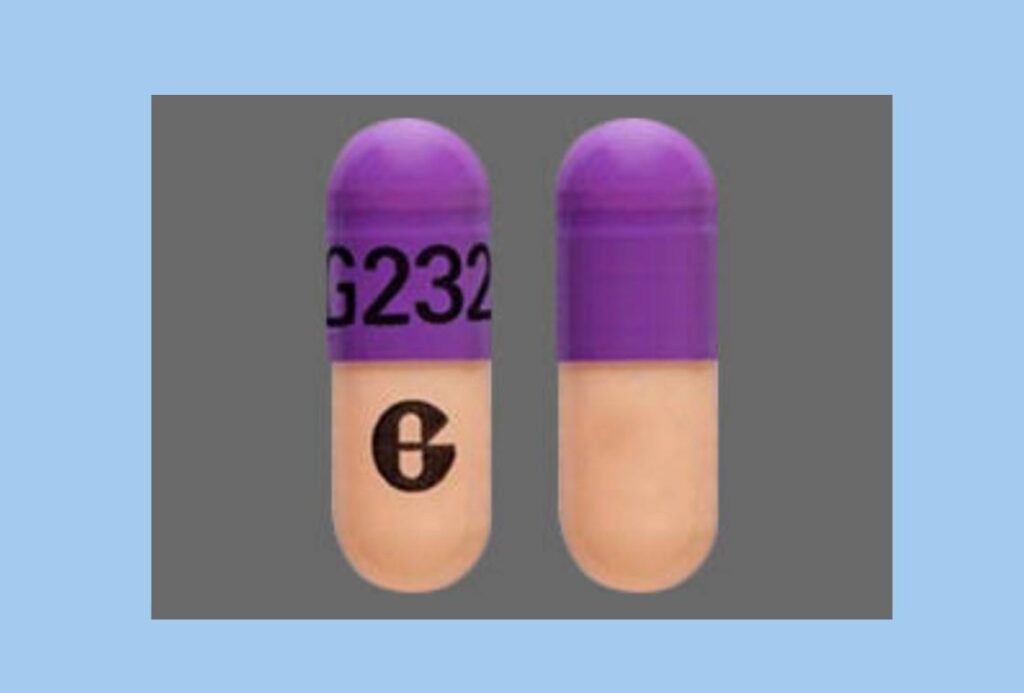
What are side effects associated with using G232 G pill?
Common side effects of omeprazole include:
• headache
• abdominal pain
• diarrhea
• nausea
• vomiting
• gas (flatulence)
• dizziness
• upper respiratory infection
• acid reflux
• constipation
• rash
• cough
Less common side effects of Omeprazole include:
• bone fracture (osteoporosis related)
• deficiency of granulocytes in the blood
• loss of appetite
• gastric polyps
• hip fracture
• hair loss
• chronic inflammation of the stomach
• destruction of skeletal muscle
• taste changes
• abnormal dreams
Rare side effects of Omeprazole include:
• liver damage
• inflammation within the kidneys
• pancreatitis
• dermatologic disorder, potentially life threatening (toxic epidermal necrolysis)
Post marketing side effects of Omeprazole reported include:
• bone fracture
This document does not contain all possible side effects and other side effects may occur. Check with your medical professional for additional information about side effects. You are encouraged to report negative side effects of prescription drugs to the FDA.
What medications interact with G232 G pill?
Drug interactions may change how your medications work or increase your risk for serious side effects. This document does not contain all possible drug interactions. Keep a list of all the products you use (including prescription/nonprescription drugs and herbal products) and share it with your doctor and pharmacist. Do not start, stop, or change the dosage of any medicines without your doctor’s approval.
Some products that may interact with this drug include: cilostazol, clopidogrel, methotrexate (especially high-dose treatment), rifampin, St John’s wort.
Some products need stomach acid so that the body can absorb them properly. Omeprazole decreases stomach acid, so it may change how well these products work. Some affected products include atazanavir, erlotinib, nelfinavir, pazopanib, rilpivirine, certain azole antifungals (itraconazole, ketoconazole, posaconazole), among others.
Omeprazole is very similar to esomeprazole. Do not use any medications containing esomeprazole while using omeprazole.
This medication may interfere with certain laboratory tests, possibly causing false test results. Make sure laboratory personnel and all your doctors know you use this drug.
The granules for oral suspension can be given through a feeding tube. If you have a feeding tube, ask your doctor how you should take the medication. Follow the directions carefully.
Do not take nonprescription omeprazole for immediate relief of heartburn symptoms. It may take 1 to 4 days for you to feel the full benefit of the medication. Call your doctor if your symptoms get worse or do not improve after 14 days or if your symptoms return sooner than 4 months after you finish your treatment. Do not take nonprescription omeprazole for longer than 14 days or treat yourself with omeprazole more often than once every 4 months without talking to your doctor.
Continue to take prescription omeprazole even if you feel well. Do not stop taking prescription omeprazole without talking to your doctor. If your condition does not improve or gets worse, call your doctor.
It’s usual to take omeprazole once a day, first thing in the morning. It does not upset the stomach, so you can take it with or without food. If you take omeprazole twice a day, take 1 dose in the morning and 1 dose in the evening.

